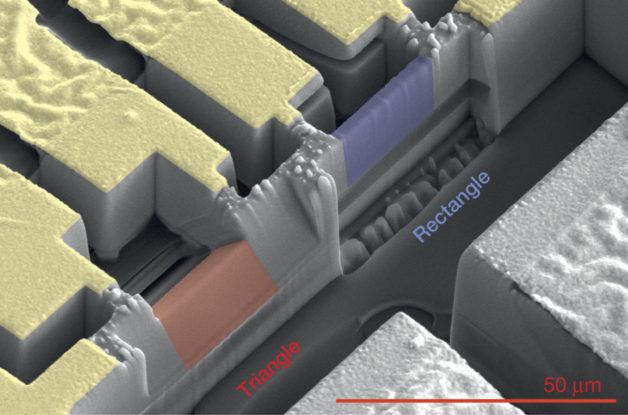
Researchers have created an exotic 3-D racetrack for electrons in ultrathin slices of a nanomaterial. The international team of scientists observed, for the first time, a unique behavior in which electrons rotate around one surface, then through the bulk of the material to its opposite surface and back.
The possibility of developing so-called “topological matter” that can carry electrical current on its surface without loss at room temperature has attracted significant interest in the research community. The ultimate goal is to approach the lossless conduction of another class of materials, known as superconductors, but without the need for the extreme, freezing temperatures that superconductors require.
“Microchips lose so much energy through heat dissipation that it’s a limiting factor,” said James Analytis, a staff scientist at Berkeley Lab and user of the Molecular Foundry. “The smaller they become, the more they heat up.”
A single crystal of cadmium arsenide. Single crystals of this material, known as a “Dirac semimetal,” were cut at the Foundry to form nanoscale slices. The slices, when exposed to a magnetic field, exhibited an odd, roundabout electron path. The material could help scientists unlock the secrets of a class of materials that could be used in next-generation electronics.
“What’s exciting about these phenomena is that, in theory, they are not affected by temperature, and the fact they exist in three dimensions possibly makes fabrication of new devices easier,” Analytis said.

